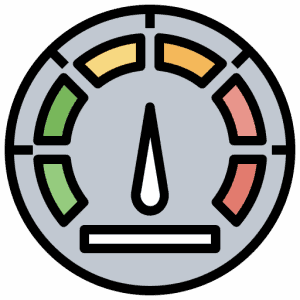With ever-increasing manufacturing costs across all industries, especially the automotive industry, it becomes a challenge to manage and be updated with all the compliance programs. As such, one of the most important compliances for the automotive industry is IMDS. The International Material Data System is a global repository containing information on various materials used by the automotive industry. IMDS compliance is especially critical for ELV’s(End of Life Vehicles). In the European Union alone, End-of-Life Vehicles (ELVs) generate between 7 and 8 million tonnes of waste annually. But what exactly is an ELV? Let’s take a look at the core elements of ELV and IMDS Compliance.
What is an End-of-Life vehicle?
The Chartered Institution of Wastes Management (CSWI) defines End-of-Life Vehicles as motor vehicles that are categorized as waste. Their components and materials are also classed as waste. Waste is anything that you discard, intend to discard, or are required to discard. This includes material being sent for recycling or reuse. It sets clear quantified targets for reuse, recycling, and recovery of the ELVs and their components. It also pushes producers to manufacture new vehicles without hazardous substances (in particular - lead, mercury, cadmium, and hexavalent chromium), thus promoting the reuse, recyclability, and recovery of waste vehicles

The ELV Directive
End-of-Life Vehicles directive was institutionalized by the European Union in 1997, to address the end of life for automotive products. The directive’s objective is to reduce the wastes arising from end-of-life vehicles. The objective of the ELV Directive includes :
● Preventing the use of certain heavy metals such as cadmium, lead, mercury, and hexavalent chromium,
●Collection of vehicles at suitable treatment facilities,
● De-pollution of fluids and specific components,
●Coding and/or information on parts and components
● Ensuring information for consumers and treatment organizations
●Achieving reuse, recycling and recovery performance targets
IMDS is a tool which is extensively used by Automakers and its supply chain to collect the material details in the parts used in automobiles. Let’s now take a detailed look at how IMDS Compliance manage the ELV requirements :

1. On-time reporting
Getting timely IMDS reports from suppliers is crucial. The reports are beneficial in ensuring national and international standards, laws, and regulations are diligently followed.
2. Accurate qualitative data
IMDS reports from suppliers become essential for critical factors including accurate chemical elements, qualitative and insightful data, analysis, and acceptance of supplier data.
3. Acceptance of IMDS submission
Getting the acceptance of IMDS Submission from customer / OEMs
Importance of timely IMDS datasheets
● Acquiring and collecting IMDS datasheets from suppliers on a timely basis is quite challenging owing to different reasons. This makes it even more important to regularly follow up with suppliers to get the IMDS submission well in advance of the Customer’s Pre-production Approval Process (PPAP) due date
● On a similar note, getting the IMDS reports accepted from customers / OEMs is also quite challenging as OEMs have different criteria in accepting them even though fundamentally they follow IMDS recommendations. Many MDS reports get rejected from customer / OEM due to grey areas such as material names and material classifications.
Click here to get a list of the latest substances which are marked SVHC or unflagged in IMDS.

Key Performance Indicators of the IMDS Compliance Program
1. Frequency of IMDS data sheets acceptance:

How many IMDS datasheets from suppliers were accepted before the customer PPAP due date? The optimal suggested duration is at least 2 weeks before the customer PPAP due date or internal set target date. This can be easily measured against the date when the IMDS submission is accepted vs target date.
2. Reasons for IMDS datasheet rejection:

The reasons for datasheet rejection can be plenty. Some of the most occurring ones are:
a. Wrong material names
b. Wrong material classification
c. Missing norms and standards
d. Wrong part number/supplier code
e. Deviation in part weight
f. Presence of expired or non-acceptable heavy metal application code
g. Missing polymeric part marking
h. Not answering the chemical Process type and for recyclate
A majority of them lead to a warning sign to users in order for them to fix it, but for a couple of them such as material names and classification requires considerable knowledge on the materials front. All the above rejections can be easily measured with a number of count of supplier parts in IMDS datasheets
3. Rejection Analysis

Once we have an accurate count of rejections, we can analyze the top 10 suppliers where their IMDS submissions have the least number of rejections vs the highest number of rejections. This analysis is useful in making an informed and data-driven decision ahead to choose the right suppliers.
4. Time taken - IMDS report to customer / OEM

The average number of days taken to submit the IMDS report to customer / OEM is an acutely healthy indicator of your IMDS compliance program. This can be calculated from the date of the request to the date of IMDS submission. This is a very important parameter that helps organizations in planning the entire IMDS compliance exercise.
5. Reasons for missed customer IMDS report submission
In case you miss submitting the IMDS report to customers / OEMs, it is very important to note down the reasons why it was missed. Some of the reasons could be:

a. Unavailability of accepted MDS datasheets from suppliers
b. Weight deviation. This is a very important parameter for holding the MDS in open status for quite a long period. While IMDS has the feature to add the measured weight which is nothing but the actual measured weight of the part on a weighing scale. Unfortunately in the majority of the cases, the IMDS user enters the system calculated weight which is not the right practice.
c. Updated Bill of material is not available or BoM keeps changing nearing the due date
d. Invalid part numbers and supplier codes
e. Delayed communication response from the IMDS requestor and the supplier
6. Identifying the cause of rejections

One of the most important parameters to measure the IMDS compliance program is Identifying the cause of rejections. In case the IMDS submission to customer /OEM gets rejected, it might be the IMDS team or the requestor who provided inappropriate inputs (eg: wrong part number in most cases) or customer (in very rare cases, where a customer may have rejected wrongly)
7. Performance management and validation
When it comes to an IMDS compliance manager, it is especially very important to know how the team is performing. While the above metrics show the health of the IMDS program, the following metrics can help measure the individual’s / team’s performance:

a. Validating the IMDS datasheets from suppliers within stipulated working days
b. Number of IMDS datasheets validated per day or how many nodes per minute are validated
c. How accurately the rejection reason was written to the supplier in case an IMDS submission is rejected by a team member? Was there any clarity being sought by the supplier?
d. Lessons learned were captured and updated or not?
e. Were the email responses to suppliers/customers answered within the stipulated time?
f. Were the customer / OEM guidelines read and updated in their own easy format or not?
g. Was the communication cascaded to the relevant team or not?
8. Cost Optimization

The average cost per MDS should be determined at the earliest. The entire IMDS compliance program is complex and involves on-time communication and real-time data sharing within the IMDS team, supplier, and IMDS submission requestor (typically the Product development engineer). The cost can be optimized with balanced communication and right data sharing
9. Detecting non-compliances

The availability of smart tools to get better insights and catch any non-compliances in the early stages is a boon. Such information can be of paramount importance in terms of saving organizations from future compliance troubles.
10. Accurate Data & Insights
It is always important to capture the data required for the health of the IMDS compliance program. Importantly the parameters, such as:

a. Date when the IMDS submission request was received
b. How much time taken to validate a supplier IMDS submission
c. How many mistakes are there in the supplier IMDS submission such as wrong material names, wrong classification, missing norms/standards, etc.
d. How many nodes per MDS?
e. Date when the final MDS submission was made to the customer
f. Rejection reasons from customer and who is the owner of the rejection
Now that we know the key indicators for a healthy IMDS program, let’s take a look at some of the important metrics to be used during different stages of IMDS compliance.
1. Inception, WIP, post-implementation, and compliance audit. The compliance date is strongly advised to be captured on a daily basis in order to plan weekly / monthly/ monthly metrics to be published. It is also equally important to audit the quality of the data failing which the entire IMDS Compliance program may give wrong interpretations to the management.
2. Build Compliance RACI metrics
3. IMDS Compliance dashboard to improve compliance awareness within the organization and better visibility to leadership
4. There are several software tools available in the market to capture the data automatically to an extent. These can be measured using a simple spreadsheet and then can be automated. These metrics are advised to be published, discussed, and shared with all the stakeholders involved in the organization including the top management to bring out transparency and improvement in the organization.
Conclusion
IMDS compliance has seen many paradigm shifts over the years pertaining to the introduction of new regulations and constant updates. IMDS compliance managers across the automotive industry have to continuously monitor the data capturing methods, analyze the relevant metrics, and identify bottlenecks in the production process. At any stage, non-compliance with respect to the ELV directive can lead to penalties, business loss, and reputation rupture. The 10 metrics mentioned above in this article would help compliance leaders to stay on top of the regulatory changes and its impact. The metrics data when analyzed by IMDS experts, will ensure not only proactive identification of any compliance risks but timely action as well.
APA Engineering has assisted some of the major automotive OEM’s and tier 1 suppliers across the globe by providing managed solutions for the European Union’s ELV Directive Compliance (IMDS). APA offers on demand consultation for different compliance verticals and has software tools for accurate data analysis. If you wish to solve any of the IMDS challenges or understand the IMDS trends in 2020-21, you can reach out to an IMDS expert @ APAEngineering here.
5 ways companies can quickly adapt to the upcoming regulatory challenges in 2021.
If this regulation is applicable to you and you are interested in knowing more about this topic and available solutions, then schedule a free consult with our experts.



